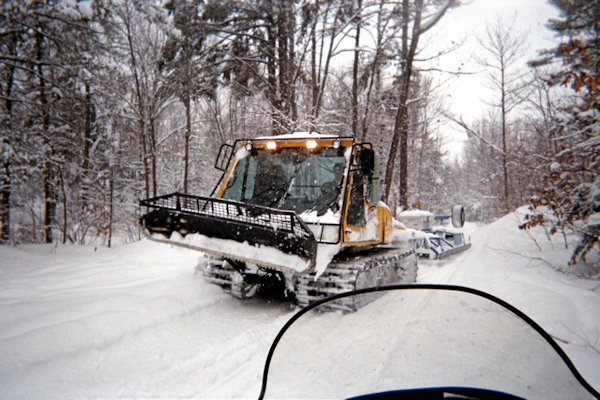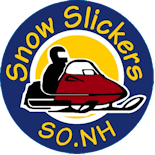Thank you to our landowners for their support!
Please Respect Our Landowners
Stay on The Trail - Do Not Litter - Carry In - Carry Out
CAUTION
- Sled Dogs may be on the trails
- Gates may be open or closed at any time, no specific dates
- Not all gates have side bars
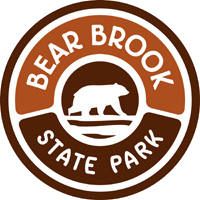
Parking
Status | Bear Brook Trails - 03/27/2024 | Grooming |
|---|---|---|
CLOSED | Corridor 15 - Dubes Pond to 4H Trail | No / 0" |
CLOSED | Corridor 15 - One Mile Trail | No / 0" |
CLOSED | Corridor 15 - Podunk Road | No / 0" |
CLOSED | Lowland (Lost) Trail | No / 0" |
CLOSED | Archery Trail/Spruce Pond Road | No / 0" |
CLOSED | Ferret Trail | No / 0" |
CLOSED | Hall Mountain Trail | No / 0" |
CLOSED | Hall Mountain Trail | No / 0" |
CLOSED | Trail 360 / Black Hall Road | No / 0" |
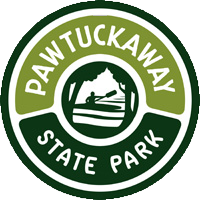
Parking
Some of the gates have been closed to keep automobiles off the trails. Gates have snowmobile bypasses.
Status | Pawtuckaway Trails - 03/27/2024 | Grooming |
|---|---|---|
CLOSED | Chase Trail and North Mountain Bypass | No / 0" |
CLOSED | North Mountain Bypass/Round Pond Connector | No / 0" |
CLOSED | Corridor 17 Connector | No / 0" |
CLOSED | Fundy Trail | No / 0" |
CLOSED | Mountain Trail | No / 0" |
CLOSED | North Mountain Trail | No / 0" |
CLOSED | Park Road | No / 0" |
CLOSED | Round Pond Trail | No / 0" |
CLOSED | Tower Road | No / 0" |
CLOSED | Big Island Campground Loop | No / 0" |
CLOSED | Horse Island Campground Loops | No / 0" |
Tower Hill
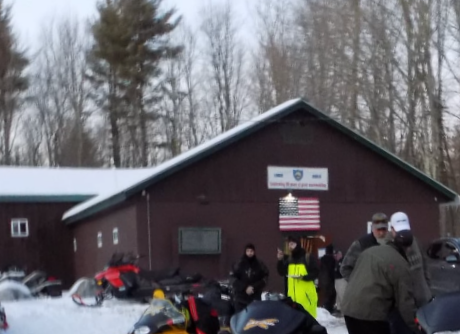
Parking
DO NOT USE THIS LOT IF YOU DO NOT HAVE A KEY CARD, YOU MAY FIND YOURSELF LOCKED IN!
Status | Tower Hill Trails - 03/27/2024 | Grooming |
|---|---|---|
CLOSED | Trail 1 | No / 0" |
CLOSED | Trail 2 | No / 0" |
CLOSED | Trail 2A (Lenny's Trail) | No / 0" |
CLOSED | Trail 3 | No / 0" |
CLOSED | Trail 4 | No / 0" |
CLOSED | Trail 11 | No / 0" |
CLOSED | Trail 11A | No / 0" |
CLOSED | Trail 11B | No / 0" |
CLOSED | Corridor 15 (12 to Dubes Pond) | No / 0" |
CLOSED | Corridor 15 (12 to Rail Bed) | No / 0" |
CLOSED | RR Bed (6/15) | No / 0" |
CLOSED | The Maze | No / 0" |
Status Meanings
- CLOSED - Gates are closed - Riding Minimal/impossible - Extreme caution if you venture out.
- POOR - Minimal snow cover with water bars and bare areas. May be very rough.
- FAIR - May not be groomed, may contain water bars and bare areas. Likely fairly rough in many spots.
- GOOD - Groomed with adequate snow in most areas. Mostly smooth with some bumpy spots.
- EXCELLENT - Groomed with full snow cover and no water bars or bare spots. Smooth with very few bumps.
Trail Grooming
WHAT YOU NEED TO KNOW ABOUT TRAIL GROOMING
Have you ever wondered why the groomer wasn’t out last night? Everyone has had a day where the trails weren’t as smooth as the day before, and you just can’t understand why. Well, here’s a little insight into trail grooming.
While most clubs that operate groomers are funded by sled registrations, gas tax refunds and the state, the guys running the groomers are volunteers. They’re up all night so you can have your fun the next day. They understand the importance of tourism and the impact snowmobiling has on their local economy, and they often share your passion for riding. Show them your utmost respect and don’t try to destroy the hard work they’ve just put forth. Remember, groomers have the right-of-way, not you.
The most important requirement for effective trail grooming is to have the snow at the correct temperature. The ideal grooming temperature is between +23º F and -5º F (-5ºC and -20ºC). As snow is collected in the drag, it has to be able to flow, like flour. As we all know, once the temperature gets close to 32ºF (0ºC) snow begins to stick together. Instead of flowing out under the rear pan, the snow builds up in the drag until it spills out over the top in large chunks or balls. These large chunks are dangerous when they freeze in the middle of the trail.
So you have a fresh 6” (15cm) of snow fall overnight. How come the groomer is not out? In order to groom effectively and make the trail more durable, the idea is to cut the mogul off completely, not just fill in the void. Moguls have a memory. If you just fill in the void with new snow, by the time half a dozen snowmobiles run over it, the new snow settles and the mogul is back again. When you groom fresh snow, the drag can’t be lowered deep enough to cut off the mogul because snow collects faster than it can flow out under the rear pan. Again, the drag fills up and spills snow out over the sides. After a fresh snow fall it’s often better to let the snowmobiles run it in and knock the air out of it. Then when the drag processes this finer snow, it packs much tighter. Often times, fresh snow means the groomer tractors can not pull as heavy of a drag, either. Lighter, smaller drags don’t pack the snow as hard nor do they cut the bumps as well. A trail may be groomed right after a snowfall, but it usually will not hold up nearly as well as after the snow has been packed and then cut.
Most grooming is done at night because it’s safer and more effective. Safer, because there are usually not as many snowmobiles on the trails, and when there is, the bright lights of the groomer are visible long before the machine itself. Grooming at night is more effective because it’s usually colder and the snow sets faster. Also, the longer the trail sets before too many snowmobiles ride over it, the longer it will last. Set up takes anywhere from two to six hours, depending on temperature and moisture content of the snow. Generally two to six or even more than ten hours may be needed for the freshly groomed trail to set up to where it is durable and will hold up to heavy snowmobile traffic.
Grooming is usually not scheduled during heavy snowfalls or storms. Operator and snowmobiler safety are of principle concern, but it is also not productive to operate in these conditions. Sleds will soon pack it down, and the resulting groom will be far more effective.
Cold temperatures must also be considered for operator safety in case of equipment problems. Less miles of trail will get groomed in extreme conditions. As the temperature drops below -5ºF (-20ºC), steel starts to get brittle and equipment is more susceptible to breakage if it strikes a solid object such as a stump or rock. Although the groomer operator usually has communications equipment and warm clothes, waiting for a snowmobile ride 25 miles (40 kilometers) in the country at 3 AM can be a very uneasy feeling.
For longevity of trail grooming, it is best to avoid riding a snowmobile on freshly groomed trails for at least two hours after the groomer passes. If possible, choose an alternate route to help improve the quality and durability of the fresh groomed trail. Avoid following directly behind a groomer because it immediately destroys the smoothing just performed by the drag. If you come up behind a groomer and the operator beckons you to go around, that’s the main reason, to allow him to groom without snowmobiles on the trail enabling effective trail set-up. He wants you in front of him, not behind him!
If you come across a “soft” or freshly groomed trail and you must use that route, try to minimize your impact on the trail: slow down; try to stay off the fresh grooming if the trail is wide enough to safely do so; operate only at the outside edge of the fresh grooming; ride in single file versus having everyone in the group take a different path on the fresh grooming; and don’t purposely fishtail or power through the soft snow. Do as little damage as possible by backing out of the throttle and reducing your impact until you get off that trail or pass the groomer. Better yet, turn around and take a different route. The mentality that “someone else will tear it up if I don’t” is what leads to a poor riding experience for all but the first few sleds to come through.
For longevity of trail grooming, it is best to avoid riding a snowmobile on freshly groomed trails for at least two hours after the groomer passes. If possible, choose an alternate route to help improve the quality and durability of the fresh groomed trail. Avoid following directly behind a groomer because it immediately destroys the smoothing just performed by the drag. If you come up behind a groomer and the operator beckons you to go around, that’s the main reason, to allow him to groom without snowmobiles on the trail enabling effective trail set-up. He wants you in front of him, not behind him!
If you come across a “soft” or freshly groomed trail and you must use that route, try to minimize your impact on the trail: slow down; try to stay off the fresh grooming if the trail is wide enough to safely do so; operate only at the outside edge of the fresh grooming; ride in single file versus having everyone in the group take a different path on the fresh grooming; and don’t purposely fishtail or power through the soft snow. Do as little damage as possible by backing out of the throttle and reducing your impact until you get off that trail or pass the groomer. Better yet, turn around and take a different route. The mentality that “someone else will tear it up if I don’t” is what leads to a poor riding experience for all but the first few sleds to come through.
Tips for Sharing Trails with Grooming Equipment
Tips for Sharing Trails with Grooming Equipment
First, recognize that trail groomers may be working on the trail at any time in an effort to provide you with smooth, safe trails. Always keep your snowmobile under control and anticipate a groomer might be around the next corner or over the hill. Some groomer operators will groom opposite of traffic in certain areas; that means they could be on your side of the trail!
Snowmobiles are much smaller and much more maneuverable than groomers, so always yield to a groomer. Always slow down when approaching or overtaking grooming equipment. Groomers move very slowly, typically only 6 to 9 miles per hour (10 to 15 kilometers per hour), so they are almost stationary when compared to a snowmobile traveling 20 to 40 miles per hour.
When approaching an oncoming groomer on the trail, slow down and move your snowmobile to the far right side of the trail. Realize that the grooming drag or tiller behind the grooming tractor may be very wide, and might extend wider than the tracks of the tractor and can essentially take up most (or all) of the trail’s width. If the trail is narrow or winding, you may need to stop at the far outside edge of the trail to let the groomer pass. When possible, pull off of the packed section of the trail completely. It is your obligation to get out of his way.
When overtaking a groomer from the rear, slow down and assess the situation ahead. If there is good sight distance and the trail ahead is clear of oncoming traffic, pass the groomer while operating with caution. It is best to wait until the groomer operator clearly sees you and knows you’re behind him. Beware that the groomer may create snow dust and make visibility poor. If the trail is narrow or winding, you may need to stay behind the groomer until the operator pulls over and signals for you to pass. Be patient because it may take time before there is a safe location and safe conditions for passing.
If you need to stop a groomer to ask for information or assistance, understand this should be done only in an area where there is good sight distance and it is safe to stop. The groomer operator may request that you follow the groomer to a safer location where he can stop and assist you.
Anytime and every time you have the opportunity, tell a groomer operator how great of a job they’re doing. Remember, most are volunteers and many love to ride, just like you. They need to hear your appreciation if you truly enjoy riding smooth trails, or to simply have trails to ride on at all. The groomers are often the ones who help brush and sign the trails as well. They need as much help and appreciation as we can all give them.
Hopefully this gives you a little insight into grooming. So if you see the groomer parked some day, it might not be ‘broke down’, we may be waiting for the right conditions.
Source: Newfoundland and Labrador Snowmobile Federation
